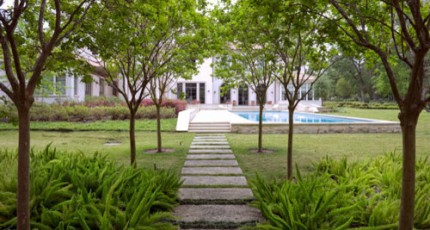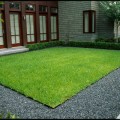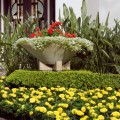Fertilizing Trees

Many wonder, when they consider all the vast forests of the world, why homeowners would ever invest in a service like tree fertilization. After all, doesn’t nature take care of fertilizing trees?
The answer is “Yes” when you are talking about nature in the context of wilderness areas. In these places, annual rainfall, flooding, soil displacement, and the death of living things that decay into compost all contribute to the revitalization of soil mineral content.
Not so in an urban backyard. Here, natural cycles are impeded by too many human creature comforts, and trees growing in the soil rapidly use up their mineral resources. These resources must be artificially replenished in order for plants to maintain their vitality.
Although we may think that the larger trees, because of their size, consume most of these nutrients, the reality is that saplings need far more fertilizer than mature trees.
This is because young trees, like all things undergoing rapid growth spurts, use more energy to fuel their maturation process.
Choosing the right kind of tree fertilization is not as easy as you might think.
Each type of fertilizer is constituted out of two basic types of nutrients: macro and micro. Macro nutrients include such elements as nitrogen, potassium, and phosphorous. Micro nutrients include iron, magnesium, and manganese.
All trees need both macro and micro nutrients, but he amount of each varies with each tree species. Some trees also need very specific amounts of certain key elements during certain phases of their early life cycle.
Many do-it-yourself landscapers, determined to handle their own tree fertilization, spend hours researching on the Internet which products are best suited to the many different trees in their yards.
It is only after purchasing all of the many products they need that they realize that they have often spent more money on retail products than they would have spend on paying a professional landscaping company to handle fertilization as part of an annual landscaping maintenance agreement that includes tree, flower, lawn, and garden fertilization.
These companies will charge for the labor involved in such services, but they will not itemize separate fees for each and every fertilizer type used in a particular service call.
The frequency of tree fertilization depends on the age of the trees, the species in questions, and mitigating environmental factors.
To be faithful to science, only carbon dioxide, water, and sunlight are true plant foods. The mineral nutrients in fertilizer are actually catalysts for photosynthesis and other living processes that occur within the tree.
These factors may require us to fertilize some trees more often than others.
While the native Houston landscape is moist, it drains poorly, and many landscape designs such as contemporary landscaping often use sand and gravel mixtures as planting zones for small and mid-sized trees.
In these areas, saplings might require tree fertilization for the first 3-5 growth cycles. In other environments, they may only need attention twice a year.
Mature trees, shrubs, and hedges normally receive fertilizer once a year early in spring. Professional lawn and garden experts spread the fertilizer evenly in a circumference 2-3 times wider than the span of the branches, taking care not to overlap areas that may have been fertilized for other plant types near the tree.



